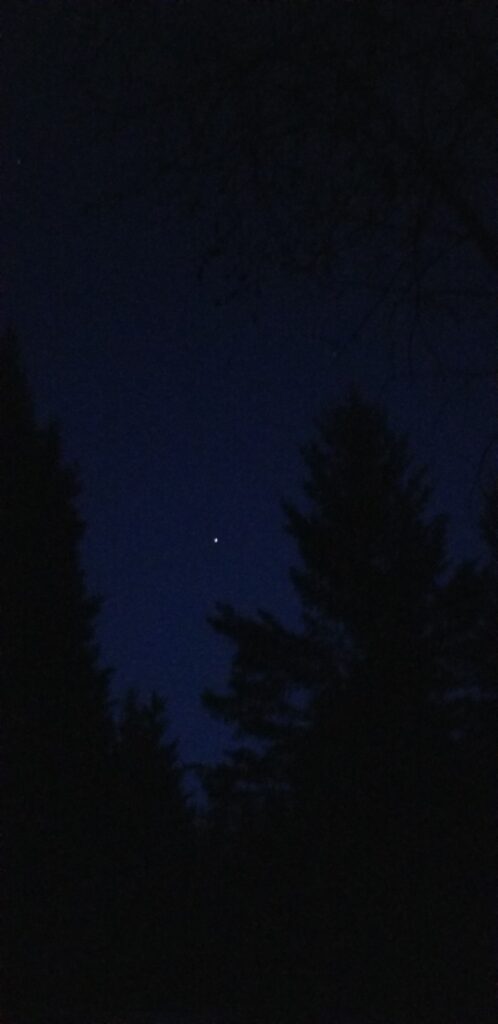Monday, December 28, 2020

What Word Do We
DO
when the darkness is so overwhelming
and the light of hope so dim?
Isaiah 50:4
The Lord God has given me the tongue of a teacher, that I may know how to sustain the weary with a word. Morning by morning he wakens— wakens my ear to listen as those who are taught.
2 Corinthians 1:4
Who consoles us in all our affliction, so that we may be able to console those who are in any affliction with the consolation with which we ourselves are consoled by God.
Words of Grace For Today
With a word to sustain the weary, and to console with the consolation we receive from God: are our traditions carriers or obstructions to Truth?
On the 4th day of Christmas, still in the time of greatest restrictions to date to stave off Covid 19 from over-running our health care capacity, still in the midst of the short days and long nights of cold and dark winter, what do we do to tell the old, old story of Jesus and his Love?
Many of us put up and decorate a Christmas tree. What is this all about? At first glance there seems to be very little that connects a conifer tree decorated as we are wont with the Word of God being born as an infant in Bethlehem. The angel or star on top the tree seems to be the loan reference to anything of Christ. So let us ask: where did this tradition come from? Is there something in it’s origins that we can reclaim to bring a more profound meaning to the Christmas Tree, which will call us to hear and tell the old, old story of Jesus and his Love?
Wikipedia gives this: A Christmas tree is a decorated tree, usually an evergreen conifer, such as a spruce, pine, or fir, or an artificial tree of similar appearance, associated with the celebration of Christmas, originating in Germany associated with Saint Boniface. The custom was developed in medieval Livonia (present-day Estonia and Latvia), and in early modern Germany where German Protestant Christians brought decorated trees into their homes. It acquired popularity beyond the Lutheran areas of Germany and the Baltic countries during the second half of the 19th century, at first among the upper classes.
The tree was traditionally decorated with “roses made of coloured paper, apples, wafers, tinsel, [and] sweetmeats”. Moravian Christians began to illuminate Christmas trees with candles, which were ultimately replaced by Christmas lights after the advent of electrification. Today, there is a wide variety of traditional and modern ornaments, such as garlands, baubles, tinsel, and candy canes. An angel or star might be placed at the top of the tree to represent the Angel Gabriel or the Star of Bethlehem, respectively, from the Nativity. Edible items such as gingerbread, chocolate, and other sweets are also popular and are tied to or hung from the tree’s branches with ribbons.
An Angel on top, or a star on top, and lights on the tree speak to the angel appearing to the shepherds, the star the ‘wisemen’ followed to find Jesus, and the Light of the World that shines in the darkness.
The reference to St. Boniface also indicates that Christmas celebrations were intact, and the yule celebrations were moved to coincide with them and thereafter the yule celebrations were ‘christianized’ or made to refer to the celebration of Christ’ birth. Thus the substantial traditions with a few references to Christ.
And is this not how most people live their lives, and God meets us all in this, with a few things tagged on to our lives, so that we take our secular or pagan or ungodly traditions, transform them ever so slightly and they become our ‘Christian’ celebrations, our ‘Christian’ lives.
God walks with us on these ‘christianized’ paths we tread each day, and calls us to remember, to proclaim and to be the Word of Life for the world, the Light of Christ in the dark.
We cannot make ourselves into saints, anymore than we can find a life that consists mostly of things of this world. These things of this world are what God created.
We see them after the fact ‘christianized’, though in truth they were God’s all along, which we tried to claim as our own ungodly, pagan or secular. Doch God is in all and created all, including our ungodly, pagan and secular efforts at life and meaning.
So we have a marvellous Christmas Tree with a star on top and lights all around. What do we tell the children who seek the pickle? Do we give them the wonder of God’s Light? The knowledge of God’s blessing of everything: trees, sweetmeats, gingerbread, candles or lights, angels and stars, hymns and carols?
It is less in what our traditions are, than in how we speak of them, how and what we value in them, and to whom we give thanks, and for whom we work – as we share all that God has given us: joy, sustenance and consolation.